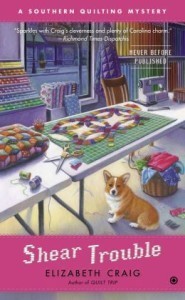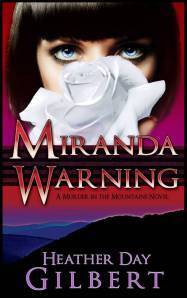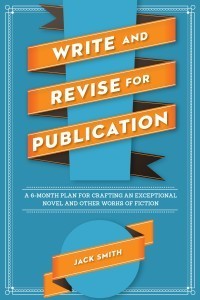Elizabeth Spann Craig's Blog, page 132
August 14, 2014
More Thoughts on Wattpad
By Elizabeth S. Craig, @elizabethscraig
I blogged in May that I was giving the publishing platform Wattpad a go. I was somewhat worried about this decision at the time, wondering if my octogenarian protagonist and I would fit in among the youthful readers on the site.
From May to August, I went from several reads to steadily increasing reads. Nothing I’d call spectacular. But each day or couple of days I’d get a notification that I had someone else following (I think of them more as subscribers of) my story. The number of reads (not readers, reads of each chapter) grew and with them grew more visibility. That’s how it works at Wattpad.
Now, suddenly, I have over 18,000 reads. I’ve done absolutely nothing to get these. I’ve not been actively networking, not been joining groups. I’ve been pretty darn introverted on the site except for my pleasant exchanges with readers who have commented on each chapter.
What helped tremendously was that I was recently placed on the Featured List on Wattpad. Someone from Wattpad emailed me and asked to feature my book. The only thing required on my end was that I keep the book up on Wattpad (once completed, since it’s being released on Wattpad serially) for six months. Featured stories get 1-2 weeks on the front couple of pages before joining the rest of the works on the main list.
We could say that it’s because the content specialist knew I was a published author and that he felt safe featuring my selection. But during our email exchange, it became clear to me that he had no knowledge of my other books or even of the fact that I’d finished writing the book I was posting to Wattpad. He seemed not to know that the book had been published in its entirety for several years. That’s a bit worrying, considering that I posted that information at the end of every uploaded chapter. It’s the “call to action” that’s recommended for authors on Wattpad.
So this is what I’m thinking helps us get featured (like it helps us find readers, in general):
Cover quality
Quality of the writing/lack of typos
Consistency in terms of publishing (this is clearly specific to Wattpad and its serial release culture)
Decent formatting/understanding of the platform
Slow but steady increase in reads (site visibility)
Other discoveries:
There are older readers there, too. Not tons, but some.
Younger readers were surprisingly willing to give the book a go and surprisingly gracious about its content.
I haven’t run into trolls there. This doesn’t mean it won’t happen, but it hasn’t happened yet. It’s been very friendly there.
I haven’t run into the time suck that I worried I’d face with Wattpad. Interactions have (mainly) been short and very pleasant.
Yes, being “featured” on Wattpad makes a huge difference. My “reads” (again, these are “reads”, not “readers”—so each chapter garners reads from readers who’ve already read previous chapters. If that makes sense…) went from the hundreds to the thousands.
How has this affected my sales? I have absolutely no idea. I know that sales in general took a summer dip in July, before picking up again. I think this is increasing awareness of my books. That’s what I believe my online presence, in general, does–give me a bit of visibility. I think I’m gaining younger readers—something I think is important for series longevity.
When might a Wattpad experiment work well for you?
It’s probably not for everybody. You’re putting something up for free. Wattpad is probably not as friendly to some genres (non-commercial fiction comes to mind). I’ve had a writer on Google Plus to recently remind me that it’s a “content silo” profiting from writers.
All of that is true(ish). For me, though, it’s worth it. I already have at least one book at bargain basement prices for sale online. Free isn’t a big deal to me. And I don’t see any other opportunity to actively court young readers in an arena that large. If they’re using me, I’m using them right back.
If you had several books out, wrote YA or other commercial genres, and didn’t mind having a book available for free…Wattpad could provide you with added exposure. And if the book is already written, the serial thing won’t give you any deadline stress–you’d just submit a chapter from your old Word file each week.
So….curious. Have y’all checked out Wattpad for your stories? Visited there at all? What are your thoughts on the platform?
The post More Thoughts on Wattpad appeared first on Elizabeth Spann Craig.
August 10, 2014
Write What You DON’T Know (Part One)
by Virginia King, @selkiemoonbooks
All new writers are advised to “write what you know” because sticking to your own experience is a recipe for authenticity, for not getting lost in unchartered territory. It goes hand in hand with character profiles and plot maps – nailing your story down so the writing is an exercise in fleshing out the bones. But are great stories pre-formed in the minds of their authors? And is this process fun?
Miles Davis told his musicians, “Don’t play what’s there, play what’s not there.” He wanted them to lose themselves, to let the music take them beyond the notes on the score, carrying their audience with them. Sounds like the same place we want to take our readers.
The Journey of a Thousand Steps
“There is something delicious about writing the first words of a story,” Beatrix Potter said. “You never quite know where they’ll take you.”
This is how I began my debut novel, The First Lie. I’d written a lot of children’s books so I knew how to write. What I didn’t know was how to create something as complex as a mystery for adults. I also had no idea what the book would be about so I couldn’t plot it. I sat down at a blank screen until one sentence came.
All she had to do was jump.
Follow the Energy
Kate Grenville says about writing the prize-winning Lilian’s Story: “I started work each day by glancing through some ‘interesting things’ … I’d allow the bits to suggest something that might have happened to my bag-lady character … and write without a plan, following thoughts and images into the unknown … The criterion was energy. If I felt energised in writing a fragment or a scene, I’d keep going.”
Kate was writing what she didn’t know, but after my own first sentence I started retelling my personal story thinly disguised by the third-person. Three chapters in, I literally fell face forward onto the keyboard – with boredom. Months later I returned because that first sentence wouldn’t let me go. There was a story here. Could I write it if I didn’t know what it was?
Undiscovered Fossils
Stephen King believes that “stories are found things like fossils in the ground … part of an undiscovered pre-existing world. It’s the writer’s job to … get as much of each one out of the ground intact as possible.”
This is the opposite of fleshing out the bones of a plot map – because with a fossil you don’t know how the bones fit together and you can only uncover them bit by bit. It takes more courage than plotting and it’s more fun. The unfolding story gets an unpredictable edge as you deal with one surprise after another, making connections while you’re asleep and trying to decipher your jottings in the morning.
When I returned to the novel, my first act of courage was to flip to the first person. Suddenly I was travelling with a different view – now I was on the roller-coaster – and it wasn’t long before my hat blew off.
Crossing the Border
Milan Kundera says, “The characters in my novels are my own unrealised possibilities … Each one has crossed a border which I myself have circumvented. Beyond that border begins the secret the novel asks about.”
Unrealised possibilities. Crossed a border. Begins the secret. He’s not talking about a plot map, he’s talking about the unknown. There’s no path to follow, there’s a trail to be blazed.
I was now inside the head of my main character, Selkie Moon. Her name took me to mythical places. The selkies are the Celtic seal people who peel off their skins and dance in the moonlight on human legs. The myth has always spoken to me, but Selkie was a modern woman needing a story. Julia Cameron provided guidance. “I don’t create characters,” she says. “I meet them.” It’s another angle on the fossil. I started excavating.
Until Something Pops
In A Novel in a Year (don’t worry it took her ten years to become a published author) Louise Doughty suggests visiting the places in your novel to reconnect with your settings and invigorate a stalled story. It did the opposite for me – it plunged me back into the unknown.
My novel was set in Sydney, my home town. The writing had lost momentum so I set out to visit all the main locations – the house Selkie had shared with her ex, her lowly flat, her favourite Chinese noodle bar, the cemetery where something bizarre happened. It was a long day on the road because I now live two hours out of town and when I got home I burst into tears. None of these places spoke to me.
The next courageous step took a while. The Sydney novel was dead, so in desperation I dropped Selkie Moon into a whole new place. Hawaii. Now she was on the run, a stranger in town, with quirky friends to make and a new culture to discover. Her predicament required much creative research. A Sydney girl with a Celtic name and a Chinese food fetish turning up on a Pacific island steeped in its own mythology. With that much pressure something had to “pop”. It did. I discovered ho’ohihi – interconnectedness – and a complex psychological puzzle started falling into place.
Not Control, Judgement
If you ditch the plot map for the roller-coaster, you’re choosing curiosity over control. The story will need taming – along with your hair – but that’s when you use your judgement and an editor as brave as you are. (The structural edit is another adventure. Not for the faint-hearted but not to be missed.) The resulting story will be bigger, more unpredictable and more satisfying than anything you could have plotted.
In Part 2, Virginia will detail practical tips for writing a book without a plot map. Watch out for this post coming soon.
Virginia King lives in the Blue Mountains west of Sydney. She’s a former award- winning publisher, the author of over fifty children’s books and the creator of several popular writing workshops. The First Lie is a psychological mystery, the first of a series introducing reluctant sleuth, Selkie Moon. Several reviewers have praised it as “genre-bending” and she attributes this to “writing what I don’t know”. The First Lie is available on Amazon: www.amazon.com/First-Lie-Selkie-Moon-Mystery-ebook/dp/B00K1VC20Y/
winning publisher, the author of over fifty children’s books and the creator of several popular writing workshops. The First Lie is a psychological mystery, the first of a series introducing reluctant sleuth, Selkie Moon. Several reviewers have praised it as “genre-bending” and she attributes this to “writing what I don’t know”. The First Lie is available on Amazon: www.amazon.com/First-Lie-Selkie-Moon-Mystery-ebook/dp/B00K1VC20Y/
Virginia blogs weekly about writing and publishing in La Bloguette – short newsy posts guaranteed: www.selkiemoon.com You can also follow her here: https://www.facebook.com/selkiemoonmysteries & https://twitter.com/selkiemoonbooks
Her editor is Nicola O’Shea www.ebookedit.com.au
The post Write What You DON’T Know (Part One) appeared first on Elizabeth Spann Craig.
August 9, 2014
Twitterific Writing Links
by Elizabeth S. Craig, @elizabethscraig
Twitterific links are fed into the Writer’s Knowledge Base search engine (developed by writer and software engineer Mike Fleming) which has over 23,000 free articles on writing related topics. It’s the search engine for writers.
Direct Sale Venues For Authors: http://ow.ly/zZKWz @mollygreene
Hidden Emotions: How To Tell Readers What Characters Don’t Want To Show: http://ow.ly/zZLxB @angelaackerman
8 Story Fixes http://ow.ly/A1A7n @JaredMGordon
Microsoft Word versus Apple Pages: —A comparative review: http://ow.ly/A1B5P @ScottTheWriter
Use Index Cards to Plan Your Story: http://ow.ly/A1BBp @sarawhitford
The Effectiveness of Free eBooks is Declining: http://ow.ly/A1A1N @galleycat @markcoker
Quick Tips: Scene Breaks: http://ow.ly/A1BHS @Savage_Woman
Writing Beware: http://ow.ly/A1Bg6 @MarlanaAntifit
3 Paths to High Concept: http://ow.ly/A1AhP @JaredMGordon
When multiple POV stories work best: http://ow.ly/A1zCi from Clever Girl Helps
Google Docs Adds Track Changes for Editing: Here’s How to Use It: http://ow.ly/A1AYs @CordeliaCallsIt
5 Free Apps that Help You Write Your Novel: http://ow.ly/A1AJ4 @Wiseink
How to Create, Publish, and Market an Anthology (and why you’d want to): http://ow.ly/A1Fq2 @JMNeyGrimm
How To Justify Spending Lots of Time Writing Before Publication: http://ow.ly/A1En5 @jodyhedlund
Are your critiques as helpful as they could be? http://ow.ly/A1CUH @jenmalonewrites
5 Ways to Get Motivated to Write: http://ow.ly/A1DwV @YAMuses @tbethhull
Worldbuilding: Don’t Neglect The Landscape: http://ow.ly/A1CrT @G_R_Matthews
5 Essential Questions to Ask When Writing Your Protagonist: http://ow.ly/A1DnI @bridgetmcnulty
15 Questions Authors Should Ask Characters: http://ow.ly/A1BM5 @writers_write
Tips for Collecting People: http://ow.ly/A1Fjh @LiesaMalik
How to be a Better Writer: Be Empathetic: http://ow.ly/A1Dhp @ErinMFeldman
We know about beta readers. Why we may also need beta holders: http://ow.ly/A1CLi @michaelnmarcus
6 Reasons You Don’t Want a Free WordPress.com Blog: http://ow.ly/A1CEq @ninaamir
Think Like a Publisher: The Early Decisions | http://ow.ly/A1D8P @deanwesleysmith
Tips for Children’s Writing: http://ow.ly/A1Cxi @MaryVeeWriter
Script To Screen: “The Princess Bride”: http://ow.ly/A3I6p @gointothestory
5 Research Steps Before Writing Your Book Proposal http://ow.ly/A3Irj @Janefriedman
5 Reasons To Cast Your Novel: http://ow.ly/A3GbJ @Figures
6 Things Writers Need to Know About Email Marketing: http://ow.ly/A3G4G @JordynRedwood
The Benefits Of Crowdfunding For Authors : http://ow.ly/A3Iay @thewritplatform
For Beginners: 5 Things to Know When Writing a Novel: http://ow.ly/A3FS5 @WritersEdit
6 Things You Shouldn’t Expect From Your Agent: http://ow.ly/A3Iya @carlywatters
Make a 1-3-5 List for a Faster, Instantly-Prioritized To-Do List: http://ow.ly/zZKwW @lifehacker
Picking the right word (it’s okay to use a thesaurus/etymological dictionary): http://ow.ly/zZL6B @JulietteWade
Mark Coker’s Tips On Selling More Books: http://ow.ly/zZLul @woodwardkaren
7 Ways to Tighten Your Prose: http://ow.ly/zZLnV @DanKoboldt
Making Characters Face Their Demons: http://ow.ly/zZKZc @mooderino
Issues with the First Person Perspective: http://ow.ly/zZKBm @shay_goodman
3 Fun Elements to Add to Your Mystery: http://ow.ly/A6nkV @MasonCanyon @penguincozies
What if the perfect eBookstore already exists? http://ow.ly/A51RI @Porter_Anderson @arthurattwell
Traits that make a devious but delectable anti-hero: http://ow.ly/zZIQn @msheatherwebb
ISBNs: The single most important action item for self-publishers: http://ow.ly/zZIHO @MissAdventuring
How to Find Time to Write and Parent Children Too: http://ow.ly/zZJ2p @livewritethrive
Are You Showing or Telling Your Internalization? http://ow.ly/zZJLD @Janice_Hardy
5 Classic Authors Who Hated Their Book Covers: http://ow.ly/zZKeD @litreactor
A Simple Way To Get More Shares On Social Media: 9 Tools To Help You: http://ow.ly/zZJSJ @writetodone
The Authors’ Wish List Goes In: How Will The Guild Council Respond? http://ow.ly/A51jf @Porter_Anderson @thoughtcatalog
5 People You Need on Your Team When You Self-publish a Kids’ Book: http://ow.ly/zZIuw @JFBookman
Things to Keep Out of Your Author Bio: http://ow.ly/zZJGG @brrbach
A good story is the secret to writing a commercial hit: http://ow.ly/zZJkP @sjaejones
Thoughts from the Intern Slush Pile: Is Your Voice Up to Snuff? http://ow.ly/zZJNb @ava_jae
The appeal of writing mysteries set in small towns: http://ow.ly/A3AoZ @MariesCozy
90 Words for “looks”: http://ow.ly/zX0y9 @gointothestory
What Should a Strong Authors’ Advocacy Group Be Doing? |Smart Set: http://ow.ly/A3KYE @Janefriedman
A perfect e-bookstore? http://ow.ly/A3GnK @Porter_Anderson @TheFutureBook
A Metaphor for Publishing: http://ow.ly/zWZ99 @deanwesleysmith
How to Pace Your Story: http://ow.ly/zWZ7W @shalvatzis
Tips for Finding Your Writing Groove Again: http://ow.ly/zWZtB @jawardwrites
115 Words for “walks”: http://ow.ly/zWZbj @gointothestory
More about the “Strong Female Character”: http://ow.ly/zWZMV @AlmaAlexander
Great Character: Axel Foley (“Beverly Hills Cop”): http://ow.ly/zWZIO @gointothestory
Crime Writing–Resources: RP and Writing http://ow.ly/zX0dl
Drawing Character Inspiration From Game Mechanics: http://ow.ly/zWZzi @mythcreants
How to Split Up Series: (The Prequel) http://ow.ly/zWZwt
Should You Hire an Editor Before Querying? Agents Weigh In: http://ow.ly/zX0jS @lisagailgreen
On horror and specialty presses: http://ow.ly/zX0lX @washingtonpost
5 Ways to Build Stronger Characters: http://ow.ly/zX0ik @mythicscribes
The Look of Your Amazon Book Page Matters: http://ow.ly/zX0p6 @gpstberg
How To Tell A Scary Story: 8 Tips: http://ow.ly/zWZHI @woodwardkaren
3 Tips for Writing While on a Family Vacation: http://ow.ly/zWZFQ @DanaLeipold
Hostage Negotiations: Information for Writers: http://ow.ly/zWZ5e @MatthewSherley
Tools 1 Writer Uses for Writing, Publishing & Blogging: http://ow.ly/zWZCV @Belinda_Pollard
Turning Novels into Screenplays: http://ow.ly/zX001 @storyfix
The Pomodoro Technique: Time Management for Writers: http://ow.ly/zWZVB @womenonwriting
Literary Terminology: http://ow.ly/zWZKI @Writers_Write
Top 10 Great Things about Writing Cozy Mysteries: http://ow.ly/A0Qry @lorisbookblog @penguincozies
5 Things You Should Never Say to an Indie Author: http://ow.ly/zU2Rf @SbethCaplin
How to Create Box Sets at Smashwords for Audience Building, Charity and Profit: http://ow.ly/zU4or @markcoker
A Book of Tweets By People Claiming They’re Working on Their Novels http://ow.ly/zU2UX @awalkerinLA @Gizmodo
The Keys to a Great Opening Scene: http://ow.ly/zU3mC @mythcreants
Indie author wish-lists for the Authors Guild: http://ow.ly/zZFLX @Porter_Anderson @Roz_Morris @RicardoFayet
How Smooth Transitions Keep Your Story Moving: http://ow.ly/zU3ij @angelaackerman
4-Point Commercial Book Checklist http://ow.ly/zU2Jw @VictoriaLamb1
How to Become a Better Writer in One, Simple Step: http://ow.ly/zU4fC @joebunting
How To Sell Books And Products Direct To Customers: http://ow.ly/zU2SA @thecreativepenn
What Dickens, Austen, Faulkner, and the Brontes Can Teach Us About Writing: http://ow.ly/zU31j @kmweiland
Writing Tips by J.K. Rowling: http://ow.ly/zU2OU @Nicholas_Rossis
When to Cut That Scene: http://ow.ly/zU3ov @mythcreants
Write What You Want to Read: http://ow.ly/zU2Zc @ava_jae
The Art of Poetic Space: http://ow.ly/zU3fZ @theprosecons
Why 1 Writer Made A Huge Mistake Marketing Her Books (And How to Avoid It): http://ow.ly/zU3K9 @JuliPageMorgan
Beyond Spellcheck: 6 Errors that Kill Your Story: http://ow.ly/zU4jK @bonniehearnhill
Don’t Look Back on Your Writing Journey With Regrets: —9 Things to Avoid: http://ow.ly/zU3Es @ediemelson
Do authors really want to get along? Why indie authors should consider joining US Authors Guild: http://ow.ly/zUQxS @Porter_Anderson
Free Books: Marketing Genius or Devaluation of Writers? http://ow.ly/zNZSI @LorraineDWilke
What could happen if we end up with smart eBooks: http://ow.ly/zO2Se @gripemaster
Why Sales Numbers and Platform Aren’t as Important as Publishers Think: http://ow.ly/zO1gd @JanetKGrant
The 4 Different Types of Conflict in Dialogue: http://ow.ly/zO1u3 @kmweiland
The unreliable narrator: http://ow.ly/zO1px @nownovel
Making the Leap from Historical Author to Mystery Author: http://ow.ly/zWAmp @heatherdgilbert
Does Your Series Tell a Bigger Story? http://ow.ly/zO43g @susanspann
How to Make the First Cut in a Writing Contest: http://ow.ly/zO01O @TheReviewReview
6 Tips to Champion Your Story: http://ow.ly/zUPSO @LyndaRYoung
How much detail and description to incorporate into a story?: http://ow.ly/zUPfQ @JacksBlackPen
The Persistent Stigma of Self-Publishing: http://ow.ly/zO0nW @janice_hardy
A crime fiction writer’s tips for outlining a mystery: http://ow.ly/zUORP @megwolfewrites
Why we should ignore the superlatives on book jackets: http://ow.ly/zNYU1 @nathanfiler
Ramp up your writing speed: http://ow.ly/zO1Ei @nicolapittam
Backstory: Who do you think you are? http://ow.ly/zUOkH @clarissadraper
Martin Scorsese Breaks Down the Difference Between Story & Plot: http://ow.ly/zO2JC @nofilmschool
Don’t Overstuff Your Verbs: Unpack: http://ow.ly/zO46C @mooderino
Making Time to Write: 4 Tips From a Writing Superstar: http://ow.ly/zO2rH @MiaJouBotha
8 Ways For Self-Published Authors to Rise Above Their Fear of Metadata: http://ow.ly/zNZHd @ebooksandkids
Cockeyed Caravan: Storyteller’s’ Rulebook: Your Ending Shouldn’t Make Your “Point” http://ow.ly/zNZLB @cockeyedcaravan
Pacing: —adding intrigue to your writing: http://ow.ly/zO3SE @LisaMBasso
10 Tips to End Writer’s Block Procrastination | Psychology Today: http://ow.ly/zO170
Dive Deeper: Slow & Steady Writing: http://ow.ly/zLoim @JordanRosenfeld
On ‘Literary Bests’: http://ow.ly/zLnY3 @ursulaleguin
How To Format A Manuscript To Publishing Industry Standards: http://ow.ly/zLoo6 @jenmalonewrites
How Soon Do We Need to Show Genre in Our Novels? http://ow.ly/zLnkZ @Janice_Hardy
Hellman’s Rule of Beginnings: http://ow.ly/zLneo @write_tomorrow
5 People Watching Tips: http://ow.ly/zLntY @jemifraser @WriteAngleBlog
What Makes a Good Horror Story? Indie Games Have the Answer: http://ow.ly/zLmNV @indiewire
How to Get Organized to Write Your Nonfiction Book Quickly: http://ow.ly/zLlOZ @WriteNowCoach
The post Twitterific Writing Links appeared first on Elizabeth Spann Craig.
August 8, 2014
Three Fun Elements to Add to Your Mystery
by Elizabeth S. Craig, @elizabethscraig
One thing that I love about writing mysteries is that they’re so much fun to write. In my guest post today for Mason Canyon at the Thoughts in Progress blog, I explore three elements that I think are as fun for mystery readers as they are for mystery writers. Hope you’ll pop over.
The post Three Fun Elements to Add to Your Mystery appeared first on Elizabeth Spann Craig.
August 6, 2014
10 Great Things about Writing Cozy Mysteries
by Elizabeth S. Craig, @elizabethscraig
I’m frequently asked why I chose to write cozy/traditional mysteries. I’ve always just answered that it was a genre that came naturally to me–I grew up reading these types of mysteries. It’s the easiest genre for me to write.
But there are other reasons I chose the genre, too, and I explored these reasons further in a guest post for Lori’s Reading Corner today: “Top 10 Great Things about Writing Cozy Mysteries.”
I would be remiss in not mentioning that I had a release yesterday. :) Penguin’s Southern Quilting mystery #4–Shear Trouble, launched August 5th. Living up to its name, it was sheer trouble to write, but I was happy with the end result.
The post 10 Great Things about Writing Cozy Mysteries appeared first on Elizabeth Spann Craig.
August 3, 2014
Making the Leap from Historical Author to Mystery Author
by Heather Day Gilbert, @heatherdgilbert 
Many people wonder why my second book is a contemporary Appalachian mystery (Miranda Warning), when my debut novel was a Viking historical (God’s Daughter). Although both books are starts to a series, (A Murder in the Mountains and Vikings of the New World Saga, respectively), I realize there is quite a disparity between the two genres.
When I decided to publish my mystery before the second Viking novel, it flew in the face of the advice of many successful indie authors. You’re supposed to pick a genre and stick with it long enough to build a following for that series. My Viking historical was doing well and I knew readers were anxious for book two in that series.
However, I knew it would take at least a year to write/produce my next historical, and my mystery was ready to go. It had been line edited and was still out on submission with three publishers. When my agent contract came up for renewal, I realized I didn’t want to sit around waiting anymore. It was time to leave my agent, become a full-time indie author, and get my mystery out.
When I launched my mystery, I quickly found mystery readers (especially contemporary mystery readers) tend to be a different crew than historical readers. But I also found that if readers like an author’s voice, they will often follow you across genres. At this point, I think my readers are pretty evenly split between those who love my historical best and those who love my mystery best. I’m thankful for this, because it means I can pursue both series without worrying too much about losing readers.
As far as writing techniques for the two genres, mystery-writing is a whole different animal than historical-writing. My historicals take hours of research. I check into Old Norse words and try to utilize the ones they had back then. I also try to weave the storyline in with the sagas’ storylines, making a kind of cohesive whole. All this sometimes makes for slower, stop-and-go writing.
My mysteries are different. Since they are contemporary and set in my home state, West Virginia, I don’t have to spend as much time on research. I can use a wider vocabulary than I do in my historicals.
I loosely plot my mysteries based on chapters, since my chapters tend to be short scenes. I like to know which chapters will require key players to be in dangerous situations, for example. Since my mysteries are like cozies, where small-town family/friends play a key role the drama, I intersperse family action with mystery action. I want readers to feel invested in the characters themselves, a la the Karon Mitford series.
For Miranda Warning, I actually wasn’t sure whodunit until partway through the book. As I got to know the characters more, I realized who was lying and who was deceived. I love it when my characters surprise me. I don’t know if this will be the case with all my mysteries, but it just worked out with this one. Yes, I do weave in clues for my readers, and yet I like my mysteries to be more psychological than clue-based…more like Rebecca by du Maurier, where you start to unlock the key to the mystery by understanding the characters’ motivations.
People often ask me if I prefer historical writing or mystery writing. The answer often depends on my mood. I’m passionate about the Viking era, and it’s one period of history I don’t think I’ll ever get tired of reading about. And yet my contemporary mysteries are just a joy to write. I love injecting humor into my books, and it’s trickier to do with a limited vocabulary in a land where people are often fighting for survival.
The next book in my writer queue is my second (and final) Viking historical, Forest Child. When that is out (hopefully in 2015), I will be free to focus on my mystery series, which will probably continue for many books. The second in that series will be titled Trial by Twelve, and I’m looking forward to writing it.
The wonderful thing about being an indie author is that I can take chances and get my books out to readers when the books are ready, regardless of genre. Whether I’m known as a historical author or a mystery author doesn’t matter one bit to me, and that’s why I haven’t struggled too hard to brand myself. My author name is my brand. Readers will find that my writer voice is the same, no matter what century I’m writing in.
HEATHER DAY GILBERT enjoys writing stories about authentic, believable marriages. Seventeen years of marriage to her sweet Yankee husband have given her some perspective, as well as eleven years spent homeschooling. Heather regularly posts on Novel Rocket about self-publishing.
You can find Heather at her website, Heather Day Gilbert–Author, and at her Facebook Author Page, as well as Twitter, Pinterest, YouTube, and Goodreads. Her Viking novel, God’s Daughter, is an Amazon bestseller. You can find it on Amazon and Audible.com. Her Appalachian mystery, Miranda Warning, released June 20th and you can find it here.
A randomly selected commenter will receive a free copy of Heather’s new release, Miranda Warning.
The post Making the Leap from Historical Author to Mystery Author appeared first on Elizabeth Spann Craig.
August 2, 2014
Twitterific Writing Links
by Elizabeth S. Craig, @elizabethscraig
Twitterific links are fed into the Writer’s Knowledge Base search engine (developed by writer and software engineer Mike Fleming) which has over 23,000 free articles on writing related topics. It’s the search engine for writers.
Working with Unexpected Character Questions: Finding Your Character’s (or Narrator’s) Inner Story: http://ow.ly/zDjVV @writeabook
A new, free phrase thesaurus for writers: http://ow.ly/zOP6e @phrasehq
De-Stress Your Writing Life: When Life Creates Factors Beyond Your Control: http://ow.ly/zDjGd @JessBaverstock
Writing and the Creative Life: The Magic of Ambient Noise: http://ow.ly/zDjcP @gointothestory
Structuring the Novel: The Miracle Finish: http://ow.ly/zDjTA @CalebPirtle
7 Questions to Ask Before Choosing a Self-Publishing Company: http://ow.ly/zDjSb @HelenSedwick
10 Reasons Running Makes You a Better Writer http://ow.ly/zDjeE @StacyEnnis
Are authors running out of book titles? http://ow.ly/zDjXa @guardianbooks
Writing Rules: (Almost) Never Say Never: http://ow.ly/zDjLE
How Can Authors and Publishers Partner Better on Book Marketing? [Smart Set]: http://ow.ly/zO3xX @Janefriedman
5 Things Writers Should Ask Potential Agents: http://ow.ly/zDk6r @writersdigest
How to Write About Death: http://ow.ly/zDk58 @enderawiggin
The 10 Greatest Literary Parties: http://ow.ly/zDk9F @Novelicious
Bestselling ghostwriter reveals the secret world of the author for hire: http://ow.ly/zGphj @guardianbooks
29 Words That Mean Something Totally Different When You’re A Writer: http://ow.ly/zGq4C @BuzzFeed @wordsbydan
How Writing a Synopsis is Like Carving Soap: http://ow.ly/zGpVw @hollyrob1
Publishers should take advantage of their backlists: http://ow.ly/zGpQc @MikeShatzkin
Pulling the Plug http://ow.ly/zGpoI @theprosecons
Are You Building Your Writer Platform at Gunpoint? http://ow.ly/zGpxG @WriterPlatform
Improve Your Dialogue: http://ow.ly/zGpDX @jamesscottbell @thecreativepenn
Creating Dread in a Short Story Opening: http://ow.ly/zGpNS @Janice_Hardy
9 Things 1 Writer Did To Become A Full-Time Writer: http://ow.ly/zGpJO @write_practice
Self-Published Book Awards: Are They Right for You? http://ow.ly/zGq04 @MarcyKennedy
The Science of Storytelling: http://ow.ly/zGpBM @Writers_Write
6 Qualities That Make an Agent Say Yes: http://ow.ly/zGpdz @JanetKGrant
Writer Mantra: Don’t Make Assumptions: http://ow.ly/zGqdz @kcraftwriter
Useful Links for Writers: Author Voice: http://ow.ly/zGqwM @writing_ie
Imagining Beyond One’s Own Experience: http://ow.ly/zGqGu @THahnBurkett @writerunboxed
The Structure of a Short Story: http://ow.ly/zGp8N @woodwardkaren
Know Your Audience: http://ow.ly/zJhb1
Mining the Data: Genre and Gender: http://ow.ly/zJgGJ @nico1esinger
4 Tips for Writing a Short Story: http://ow.ly/zJfFa @Julie_Glover
Irony in Dialogue: Intentional Irony: http://ow.ly/zJfHp @cockeyedcaravan
Turning Your Novel into a Screenplay: http://ow.ly/zJfWd @storyfix
How to Run a Successful Book Signing: http://ow.ly/zJgL0 @MHartnerAuthor
Quality writing is not subjective: http://ow.ly/zJhjg @damiengwalter
7 Steps To Get Endorsements for Your Book: http://ow.ly/zJgUC @trainingauthors
How to Use Alliteration and Assonance: http://ow.ly/zJfSs @WritersEdit
The Philosophy of Writing and Reading: http://ow.ly/zJg4R @Shaina_Jade
How to Give your Characters a Distinctive Attitude: http://ow.ly/zJfZ0 @shalvatzis
Top 10 Character Flaws That Don’t Work For Me: http://ow.ly/zJfNA @pyrosama
Costuming Your Characters: http://ow.ly/zJhqv @mythcreants
Personality Typing Characters http://ow.ly/zJgbU @glencstrathy
4 Revision Tips: http://ow.ly/zLmmb @MichelleA_Smith
6 Things to Consider When Writing Promotional Copy for Your Book by Karl Bunker for @JFBookman : http://ow.ly/zLlQs
Noticing Filler: http://ow.ly/zLnqf @Kid_Lit
YA market opens up a new world for authors: http://ow.ly/zLnLv @latjasonsong
Michael Crichton’s Method for Plotting Out a Story: http://ow.ly/zLnAK @angelaackerman
Each character needs swoons and wounds: http://ow.ly/zLmIS
We’re losing all our Strong Female Characters to Trinity Syndrome: http://ow.ly/zLo9I @TashaRobinson @thedissolve
Douglas Preston: On Amazon, Hachette, and Indie Authors: http://ow.ly/zMLpF @Porter_Anderson @TheFutureBook
Being Kind to Our Creative Self: http://ow.ly/zDjOZ @DouglasEby
Time Management for Writers: http://ow.ly/zDjIZ @Jeannie_Moon
Identifying bloated writing: http://ow.ly/zDjZl @ACFlory
The Ironic Conclusion: http://ow.ly/zDk1V @cockeyedcaravan
155 Words to Describe an Author’s Tone: http://ow.ly/zDjHD @writers_write
Great Character: Jackie Brown: http://ow.ly/zDjbo @gointothestory
A Closer Look at the Upcoming Writer’s Digest Conference In New York Aug. 1-3: http://ow.ly/zML71 @Porter_Anderson
5 Myths About the New Era of Publishing: http://ow.ly/zDjED @leftonbomb
Acknowledgments … Who’s in Your Village? http://ow.ly/zDjB2 @mybookshepherd
The 3 things every horror author must understand: http://ow.ly/zC9pn @standoutbooks
Your characters need their potatoes: http://ow.ly/zC870 @JaneLebak
Emergency Communications Information for Writers: http://ow.ly/zC7jQ @FionaQuinnBooks @djswykert
Writer Without Residence: Keeping it Lit on the Road: http://ow.ly/zC8zE @EAyC
Making Writing Happen: http://ow.ly/zC9hX @AbstractChicken
Tips for formatting a chapter: http://ow.ly/zC7wJ
The Thing About Theme: http://ow.ly/zC89N @Frank_Zafiro
5 Short Masterpieces by the Women of Horror’s Golden Age: http://ow.ly/zC8IB @sfsignal
How to Efficiently Evoke the Setting of a Novel: http://ow.ly/zC9sS @JoeBunting
3 Myths That Hold Your Best Writing Back: http://ow.ly/zC7Gw @adderworld
Is there a role for storytelling in science? http://ow.ly/zC8oR @JonathanLWai
Law and Fiction: Googling potential jurors: http://ow.ly/zC9CO
The Hero’s Journey: Part One, the Hero & the Journey: http://ow.ly/zC9QO @AlienNextDoor
Editing Crimes: A Case Study http://ow.ly/zC7CH @kcraftwriter
How To Write A ‘Choose Your Own Adventure’ Story: http://ow.ly/zC98M @woodwardkaren
3 Reasons You Should Attend a Writers’ Conference: http://ow.ly/zC87U @losapala
A Better Way to Open Your Novel: http://ow.ly/zzQRA @storyfix
The 10 Biggest Mistakes New Authors Make: http://ow.ly/zzPVl @brooke_warner
On Trolls and Fake Bad Reviews: http://ow.ly/zzQMK @victoriastrauss
The Secret Of How to Make Your Book Un-Put-Down-able: http://ow.ly/zzQwn @kmweiland
How Authors Can Use Listmania to Promote Their Book: http://ow.ly/zzQAG @aBookPublicist
Screenwriting: Sketch Anatomy: Andy Cowan Explains the Origins of ‘Seinfeld’s ‘The Opposite’: http://ow.ly/zzQaw @splitsider
The Art of Microfiction: http://ow.ly/zzQJs @GayleTowell
How to Write a Book or Blog (The 6 Danger Stages You Need To Overcome): http://ow.ly/zA3TG @aliventures
The 3 Most Common Medical Mistakes Writers Make: http://ow.ly/zzQZc @dplylemd
7 ways to overcome fear and uncertainty about writing: http://ow.ly/zzQDy @SarahAlexis4
Murders designed to look like accidents in crime fiction: http://ow.ly/zA7hN @mkinberg
Tips for Writing a Short Film Screenplay: http://ow.ly/zzQs1 @tumbhi
What literary fiction means and why it matters: http://ow.ly/zzQiE @KOMcLaughlin
Are Your Scenes Causing an Effect? http://ow.ly/zzQ5Z @janice_hardy
Brand Yourself for Indie Success: http://ow.ly/zA6q8 @BookWorksNYC
Emotional Elements of Plot: Stories that Last Evoke Emotion: http://ow.ly/zA6C6 @plotwhisperer
Got Plot? A Handy Quick-Check – The Rhubarb Writers Group: http://ow.ly/zA6dq
Structuring a Novel Part 4: The Critical Decision: http://ow.ly/zwhBq @CalebPirtle
Why your character’s religion, or lack of it, is important: http://ow.ly/zwhxS
The Author Earnings Report Methodology: http://ow.ly/zGtlF @HughHowey @AuthorEarnings
Where are the women in African non-fiction? http://ow.ly/zwfgJ @MsAfropolitan
Edits, Editors, Editing: ”The Secret Weapon of Every Successful Writer: http://ow.ly/zGqic @RuthHarrisBooks
Javier Marias’ 7 Reasons Not to Write Novels +1 Reason Why: http://ow.ly/zwfeQ @pubperspectives
Building a Killer Email List: http://ow.ly/zwf63 @nick_stephenson
Tips For Better Dialogue: http://ow.ly/zwdP1 @Flashflood14
Why Your Story’s Ending Determines its Beginning through its Middle: http://ow.ly/zwhwt @shalvatzis
How to make a living as a writer: http://ow.ly/zwdR4 @standoutbooks
Setting: Context & Picture: http://ow.ly/zFOzw by Jack Smith.
Novel Pacing: 3 Crucial Elements: http://ow.ly/zwg26 @lindasclare
5 Things to Know about Working with Beta Readers: http://ow.ly/zwf7g @byondpapr
Tackling the Rewrite: http://ow.ly/zwfZZ @EAyC
Finding the Right Critique Group for You | Word Cafe: http://ow.ly/zwdIR
33 Things 1 Writer Learned About Writing at 33: http://ow.ly/zwfsb @LorenKleinman
Writing a Memoir: The Ultimate Selfie: http://ow.ly/zwfpe @writers_write
Tips for Finding Your Writing Groove Again: http://ow.ly/zwg7e @jawardwrites
The mistake of appealing to readers for support (in the Amazon-Hachette-indie author fracas): http://ow.ly/zDC56 @Porter_Anderson
Common Writer Advice Revised: http://ow.ly/ztlbf @HeatherJacksonW
15 Tips To Increase Your Productivity: http://ow.ly/ztkSm @mollygreene
3 TED Talks That Uncover the Secrets of Storytelling: http://ow.ly/ztktM @JulieNeumark
Free Indirect Style: what it is and how to use it: http://ow.ly/ztmGs @emma_darwin
When Defending Your Writing Becomes Defending Yourself : http://ow.ly/ztloT @salesses
8 Ways to Reignite Your Passion for Writing and Write: http://ow.ly/ztlTU @WriterJoMalby
The post Twitterific Writing Links appeared first on Elizabeth Spann Craig.
July 31, 2014
Writers—Be Careful How You Sit
by Elizabeth S. Craig, @elizabethscraig
Today I have another public service announcement for all the writers out there—sitting can be hazardous to your health.
Yes, I know. We thought we had the kinds of jobs where injuries might be limited to paper cuts or possibly dropping a laptop on our foot.
Unfortunately, I’m here to state otherwise. I’ve been in physical therapy for back issues for the last month. Occasionally I wear a hideously unstylish brace that resembles a corset in both appearance and comfort level. Anyone seeing me in the brace has asked, “Elizabeth, what happened?”
I think they’re expecting some exciting tale of adventure gone wrong (which is silly of them, if they know me at all). Snow skiing or waterskiing maybe? Perhaps some awful car accident? But I have to admit that I received my back problems from…sitting.
The doctor said it took years to get my back in the condition it’s in now…so PT is twice a week and moving a bit slowly for this impatient writer.
There were things that I shouldn’t have done that I did fairly constantly in the last ten years:
Sat on an overstuffed sofa with my feet on the coffee table and my laptop on my lap. Don’t do this.
Sat in an armchair with my feet on an ottoman and my laptop on my lap. Don’t do this, either.
Sat for long stretches, period. Yet another no-no.
This interesting graphic from Bonnie Berkowitz and Patterson Clark for the Washington Post clearly shows the health hazards of sitting and ideas for combatting the problem, including various stretches (that resemble what I’m doing in PT) and exercise balls.
Sadly, I think the way I sat was very similar to the person in the graphic. Except, of course, that my feet were up and the laptop was in my lap, not on a desk. :)
The best practice seems to be to sit with your feet on the floor and your laptop on a desk or a table of some kind. Sit with your back straight. And take frequent breaks.
Porter Anderson also wrote about the dangers of sitting in his recent post, “Don’t Take Author Obesity Sitting Down” for Writer Unboxed. We all know the myriad problems that obesity causes and sitting certainly tends to put pounds on. Fortunately, obesity isn’t my issue, but I would have done well to take Porter’s advice on standing desks in the post. I have used a standing desk off (well, it’s a standing counter, since I was writing in my kitchen) for the past couple of years but not enough for me to avoid the pickle I got myself in. In the post, Porter offers ideas for a “trial period” for using a standing desk.
RSI, repetitive strain injury, is another issue writers face. I’ve also had problems with RSI in the past and have learned to back off from typing and do some stretches when it starts flaring up. I’ve also had some success with voice recognition software (Dragon Naturally Speaking) when I’ve been on deadline at the same time I’ve had issues.
Author Roz Morris has had problems with RSI and wrote about how she deals with it in her post “RSI and when your books come back to haunt you.” She mentions posture, weight-lifting, and taking breaks as being helpful, among other things.
There is actually even software designed to force you to take writing/computer breaks (Workrave is one. Reviewed by CNET’s Dan Russell here).
Lifehack’s Anca Dumitru offers advice in her article, “How to Overcome RSI While Building Your Dream Writing Career.” In it she links to helpful hand and wrist exercises.
I’ve mentioned recently that I’m doing a good job exercising…but I was definitely not doing a good job being careful how I worked, until now. What’s your work station like for your computer time?
Image: MorgueFile: Jade
The post Writers—Be Careful How You Sit appeared first on Elizabeth Spann Craig.
July 28, 2014
Setting: Context & Picture
Guest Post by Jack Smith
When we think of a novel, we think of a story. We think of characters moving through time, growing due to conflict, coming ultimately to some sort of realization, undergoing some sort of change—maturing in some way. We think of plot. We think of theme.
We also think of setting. One thing that makes some novels memorable is a richly developed sense of setting.
A novel must have some sort of setting, or physical environs, where characters move and have their being. Two questions come up. 1.) How important is setting in a given novel? 2) How do you go about creating setting? The second question is related to the first because in some novels, if setting is not a major force, you shouldn’t do very much at all. But if setting is really important, and if it’s important to create strong visual pictures of place, you have a choice of depicting it with a few brush strokes or really describing it in vivid detail.
CONTEXT: When you think about setting, think about your character in a given context, with a particular sensibility. The South is different from the North, the West from the East. The ambiance at a factory is quite different from that of a college or university. A home in the suburbs is different from a high-rise apartment in the city.
Secondly, I would like to add, as I did in my Write and Revise for Publication,that setting can include people associated with a particular place. Your character’s workplace includes not only desks, machines of various kinds, etc., but also the co-workers who contribute to the overall atmosphere. Imagine them missing: It’s not the same place, is it?
There’s usually more than one context for a given character. And so ask yourself the following kinds of questions:
1) Which setting has primary influence on my character—home, work, a recreational spot of some kind, a place of refuge?
2) How does my character feel about the places in his or her life? Happy, annoyed, frustrated, depressed, etc? How important is place in my character’s life?
3) Does setting contribute significantly to my character’s conflicts in the story? If so, how? And how much?
DEPICTING SETTING. If a particular setting doesn’t have much to do with your character’s struggles, then give it minimal detail—just enough to establish where your character is—enough to establish the place in your reader’s mind. With places that are pretty important—plot-wise, character-wise—then, of course, you should bring them alive for your reader—in one of two ways, the first minimalist, the second maximalist: 1) by brush strokes of descriptive details interspersed with scenic treatment of characters associated with the setting, 2) by thorough descriptive detail.
–a few brush strokes with scenic treatment: Pick and choose key concrete details which are just enough to give your reader a real sense for the place. Let your reader fill in the rest. Scenes with several specific details—not necessarily concrete—can also help your reader visualize a place. With enough specific details, and a sense of lived experience through strong scenic development, the reader will fill in the rest.
–rich and numerous specific and concrete details: Furnish a full-blown picture of place. This can work quite well if it’s important to capture a number of nuances about it. But you do have to be careful not to overdo it, and you also need to create a dominant impression.
Certain places can be quite important in a novel, others less so. For places that are important, it’s important to know in what ways, and how to capture these places so that the reader can picture them, feel like they’re there, wherever there happens to be.
Jack Smith is author of the novel Hog to Hog, which won the George Garrett Fiction Prize (Texas Review Press. 2008), and is also the author of Write and Revise for Publication: A 6-Month Plan for Crafting an Exceptional Novel and Other Works of Fiction, published earlier this year by Writer’s Digest. His novel ICON will be published in June by Serving House Books.
Prize (Texas Review Press. 2008), and is also the author of Write and Revise for Publication: A 6-Month Plan for Crafting an Exceptional Novel and Other Works of Fiction, published earlier this year by Writer’s Digest. His novel ICON will be published in June by Serving House Books.
Over the years, Smith’s short stories have appeared in North American Review, Night Train, Texas Review, and Southern Review, to name a few. He has also written some 20 articles for Novel & Short Story Writer’s Market, as well as a dozen or so pieces for The Writer. He has published reviews in numerous literary journals, including Ploughshares, Georgia Review, Missouri Review, Prairie Schooner, American Review, Mid-American Review, and the Iowa Review.
The post Setting: Context & Picture appeared first on Elizabeth Spann Craig.
July 26, 2014
Twitterific Writing Links
by Elizabeth S. Craig, @elizabethscraig
Twitterific links are fed into the Writer’s Knowledge Base search engine (developed by writer and software engineer Mike Fleming) which has over 23,000 free articles on writing related topics. It’s the search engine for writers.
Clean Your Desk for Productivity (but Keep It Messy for Creativity): http://ow.ly/zpSju @99u
Name generators: http://ow.ly/zpQAb From Clever Girl Helps
Book Marketing with Videos: http://ow.ly/zpQmO @trainingauthors @KatieDavisBurps
Copyright Warnings – Hold Onto Your Rights: http://ow.ly/zpZHX @susanspann
5 Tips for Writing a Powerful Short Story: http://ow.ly/zpZMU @FaberAcademy
Horror Clichés in need of an Exorcism: http://ow.ly/zpZqt @DrewChial
An agent’s advice on tapping industry connections to find an agent: http://ow.ly/zq0eT @Janet_Reid
7 industry experts weigh in on author platforms and branding: http://ow.ly/zBk17 @Janefriedman @scratch_mag
4 Things Writers Should Know About Beta Readers: http://ow.ly/zpXHL @NatRusso
Writing an Action Scene? 5 Ways to Add More Punch to Your Novel http://ow.ly/zpXVF @hughosmith
Author Directory Sites: The Complete List: http://ow.ly/zpYIV @selfpubreview
8 Techniques To Up The Drama Factor In Your Short Stories: http://ow.ly/zpZRo @writersrelief
350 Character Traits: http://ow.ly/zpYe5 @amandaonwriting
Self-aware vs self-absorbed narration in travel writing: http://ow.ly/zpXoA @MatadorNetwork
How Not to Start a Novel: 4 Things to Avoid on Page 1: http://ow.ly/zpYoH @janice_hardy for @annerallen
5 Scene Pacing Tips: http://ow.ly/zq01s @SKouguell
Why Most Authors Should Not Have Social Media Accounts for Their Books: http://ow.ly/zpYEc @DanielDecker
Should crime authors mix fact and fiction? http://ow.ly/zpY6x @musiciany
20 Hollywoodian Clichés to Ban From Your Script: http://ow.ly/zpX6J @Mentorless
How to Write a Negative Character Arc: The Second Act: http://ow.ly/zpXZp @KMWeiland
On Writing Practice Novels: http://ow.ly/ztkN6 @ava_jae
Staying Motivated During the Tough Times: http://ow.ly/ztkTN @stdennard
7 Things To Do When You Don’t Feel Like Writing: http://ow.ly/ztmCe @writing_tips
What Entrepreneurs Can Learn From Stephen King: http://ow.ly/ztke3 @entmagazine
How to Write a Historical Fiction Young Adult Novel: http://ow.ly/ztm6X @ShanonHitchcock
Character Talent & Skills Thesaurus Entries: http://ow.ly/ztmA6 @angelaackerman
Writing Residency 101: What They Are and How to Get One: http://ow.ly/ztlvp @WindyLynnHarris
Test Your Story’s Opening Line: http://ow.ly/ztm5a @SueColetta1
Why Transmedia Storytelling Engages Young People: http://ow.ly/zpSEL @cherylrwrites
5 Conversation-Starting Questions to Ask Writers: http://ow.ly/zpSwu @StacyEnnis
4 Characteristics of Author Attitude and Why You Need Them: http://ow.ly/zpTYj @ninaamir
Structuring a Novel: The Life Changer: http://ow.ly/zpTTb @CalebPirtle
Talents and Skills Thesaurus Entry: A Way with Animals: http://ow.ly/zpPff @beccapuglisi
Fearlessness in creativity is a myth: http://ow.ly/zpSpl @jonwilkening
Sharing content more than once on social media: http://ow.ly/zpPzc @wherewriterswin
Admin Assistants in Crime Fiction: http://ow.ly/zA6LD @mkinberg
Amazon Adds Pricing Suggestions to KDP: http://ow.ly/zA49z @thDigitalReader
Making Your Home Page Stand Out: http://ow.ly/zpSPs @SusanGilbert
Comment Etiquette: http://ow.ly/zpQFH @writing_tips
5 stellar grammar sites for writers: http://ow.ly/zpPbF @junglereds
10 Common Types of Writer’s Block: http://ow.ly/zpRXB @gointothestory
5 Ways to Write Anti-Heroes Your Readers Won’t Want To Kill: http://ow.ly/zpU4y
7 Steps to Editing Like a Master: http://ow.ly/zn3SL @beccaquibbles
Describing the protagonist when you’re writing in first person: http://ow.ly/zn4eB From Clever Girl Helps
Pros and Cons of Writing in First Person: http://ow.ly/zn4Ep
How Movie Trailers Can Help You Write Better Query Letters: http://ow.ly/zn3ON @janice_hardy
On Writing Flashbacks: http://ow.ly/zn3PX @ava_jae
10 Steps To Provide a Helpful Critique: http://ow.ly/zn3HA @Shirl_Corder
Writing Strong Transitions: http://ow.ly/zn3Nw @writeabook
Queries–nudging etiquette: http://ow.ly/zn3UE @atrueblood5
26 Of The Greatest Book Dedications: http://ow.ly/zn4yk @JoBarrow
Great Character: Mr. White (“Reservoir Dogs”): http://ow.ly/zn42c @gointothestory
A Helpful Way to Determine When Not to Use “Whom”: http://ow.ly/zn3IR @CSLakin
Write What You Love and Stay True To Your Passion: http://ow.ly/zn3Ma @KALongshore
The shape-shifting factor in publishing: subscriptions: http://ow.ly/zwjjD @Porter_Anderson @TheFutureBook
Reevaluating, Reorganizing & Recommitting to Your Goals: http://ow.ly/zn3wo @KelliAnnMorgan
What does it take to create a regency romance? http://ow.ly/zn3so @EmbracingRomanc @authorJessicaJ
5 Ways to Add Conflict to Your Story: http://ow.ly/zn3Fy @mythcreants
Labor Unrest Among Amazon’s Authors: http://ow.ly/zwizG @Porter_Anderson @HughHowey @bob_mayer
New Indie Authors: What 1 Experienced Author Would Do if She Were Starting Today: http://ow.ly/zlT3L @goblinwriter
5 Reasons To Pan Those 5-Star Reviews: http://ow.ly/zweCr @drothmanwrites @Porter_Anderson
Top 10 Storytelling Cliches Writers Should Stop Using: http://ow.ly/zlT9T @robwhart
6 Ways eBooks Are Reaching More Readers: http://ow.ly/zlTly @AnnaGuastello
Adding Horror Elements to Your Writing: http://ow.ly/zlSZI
Writing the Sex Scene: http://ow.ly/zlTk3 @SusanSquires
7 Absurd Kanye West Quotes That Will Actually Help Your Writing: http://ow.ly/zlTby @rxena77
Creating A Creative Outline: http://ow.ly/zlSUO @woodwardkaren
Viewpoint is about judgment: http://ow.ly/zlSKB @AnthonyEhlers
Writing a scene: a checklist: http://ow.ly/zlSXm @johnaugust
Why and How to Schedule Your Personal Writer’s Retreat: http://ow.ly/zlTro @GretaBoris
Present Participle as Adjective: http://ow.ly/zlSJF @writing_tips
10 Tips on Writing – and Writing More: http://ow.ly/zlTfr @GarthSWright
The best literary hashtags on Twitter: http://ow.ly/zlTdr @readandbreathe @salon
The Aspiring Writer’s Dictionary http://ow.ly/zlTmJ @BillFerris @writerunboxed
Writing Revealing Dialogue: Self-centered People and Unpredictable Outcomes: http://ow.ly/zlTo4 @kiersi
How Believable Is Your Character’s Storytelling? http://ow.ly/zlT6h @skyefairwin
Why Amazon Terrifies Publishers: Let’s Look At Royalty Statements: http://ow.ly/ztkWS @GeorgeAnders @forbes
21 biggest amateur screenwriting mistakes: http://ow.ly/zkNN2 @scriptshadow
Things to Consider When Considering Self Publishing: http://ow.ly/zkOaR @srjohannes
The Boundary-Pushing Novelist Who’s Made Twitter His New Medium: http://ow.ly/ztkEN @tejucole @wired @Thessaly
Reading Through Someone Else’s Eyes : http://ow.ly/zkOfE @NewYorker
1 Writer Navigates the 1st Summer of Her MFA: http://ow.ly/zkNTj @themfayears
Why You Should Act As Your Own Author-Publisher (At Least Once): http://ow.ly/zkP4A @ChuckWendig {lang}
Concept, Structure and Transformation – How to plan a novel : http://ow.ly/zkOmU @VeronicaSicoe
The 5 Ways Every Story Should Begin: http://ow.ly/zkNrg @Jackson_D_Chase
3 anti-social skills to improve your writing: http://ow.ly/zkNKN @TED_ED
The Importance of Journaling: http://ow.ly/zkO5l @chrstnejschmdt
How to Understand Self-Publishing Acronyms: http://ow.ly/zkNG5 @booklife
Writers on Writing: “Writing What I Want”: http://ow.ly/zkOVz @LoriLitchman
How To Write A Screenplay You Can Sell : http://ow.ly/zkOO4 @goodinaroom
4 Rules for Enhanced Creativity and nailing word count: http://ow.ly/zkOkW @cairnswrites
Writing Thrillers: 50 Lessons Learned From Thrillerfest 2014: http://ow.ly/zkOiZ @thecreativepenn
Why All Writers Should Write Book Reviews: http://ow.ly/zkNZ2 @brunsdavid
First drafts: what they should and shouldn’t be: http://ow.ly/zgAzX @nownovel
How To Market Your New Book http://ow.ly/zgvVO @brettarends @forbes
Ray Bradbury on Failure, Why We Hate Work, and the Importance of Love in Creative Endeavors: http://ow.ly/zgwEK @brainpicker
Don’t Take Author Obesity Sitting Down: http://ow.ly/zqkkf @Porter_Anderson @writerunboxed
8 Story Fixes: http://ow.ly/zgA5N @JaredMGordon
Hiring a Book Publicist 101: http://ow.ly/zgCfq @suegreenbergpr
20 Screenwriting Tricks And Tropes We Never Need To See Again: http://ow.ly/zgyBt @io9
Why 1 Writer Left Her Agent & New York Publisher: http://ow.ly/zpYPn @ClaireCookwrite for @JaneFriedman
Writing: One Size Does Not Fit All: http://ow.ly/zgw8l @writing_tips
Navigating the Book Promotion Jungle: http://ow.ly/zgzGQ @WriterlyTweets
7 Pieces of Life Changing Writing Advice From Dear Sugar: http://ow.ly/zgwLE @RyanHoliday @thoughtcatalog
Digital Revolution Act 2: TheTrue Nature of Amazon Revealed? http://ow.ly/zpiOX @claudenougat
Why write flash fiction? http://ow.ly/zgzSz @LenKuntz
Patience Is a Writer’s Most Important Virtue: http://ow.ly/zgw3X @writeitsideways
An agent’s advice on when new writers should start attending conferences: http://ow.ly/zgwTA @Janet_Reid
Integrating Writing Into Life: http://ow.ly/zoyH5 @LexThomasAuthor
Writing by hand, or typing: when are you most creative? http://ow.ly/zgwgr @chrisrobley
Words to avoid when writing jacket copy: http://ow.ly/zgwxB @markkrotov
Practice, Persistence, Professionalism: http://ow.ly/zgsHc @nancyjcohen
Is Your Book Cover Design Stopping You From Being On The Bestseller List? http://ow.ly/zgvsg @ThomasEMcGee
Malapropisms, Spoonerisms and Oxymorons: http://ow.ly/zgfg6 @CASpeight
How to Survive Slow Book Sales: http://ow.ly/zgfnG @shalvatzis
Being the Person Your Writing Needs You to Be: http://ow.ly/zgfBb @LeonardoTrait
Who Said What? Speech Tags Decoded: http://ow.ly/zgfxM @HGComan
Why Your Book Deal Is Just the First Step: http://ow.ly/zgfIa @LizandLisa @writerunboxed
Food Idioms Can Fuel Our Writing Career: http://ow.ly/zgePM @pubcoach
How much time should writers spend blogging and building websites? http://ow.ly/zgeu1 @roz_morris
Essential Dos and Don’ts for Author-Bloggers: http://ow.ly/zgfko @annerallen
The post Twitterific Writing Links appeared first on Elizabeth Spann Craig.




